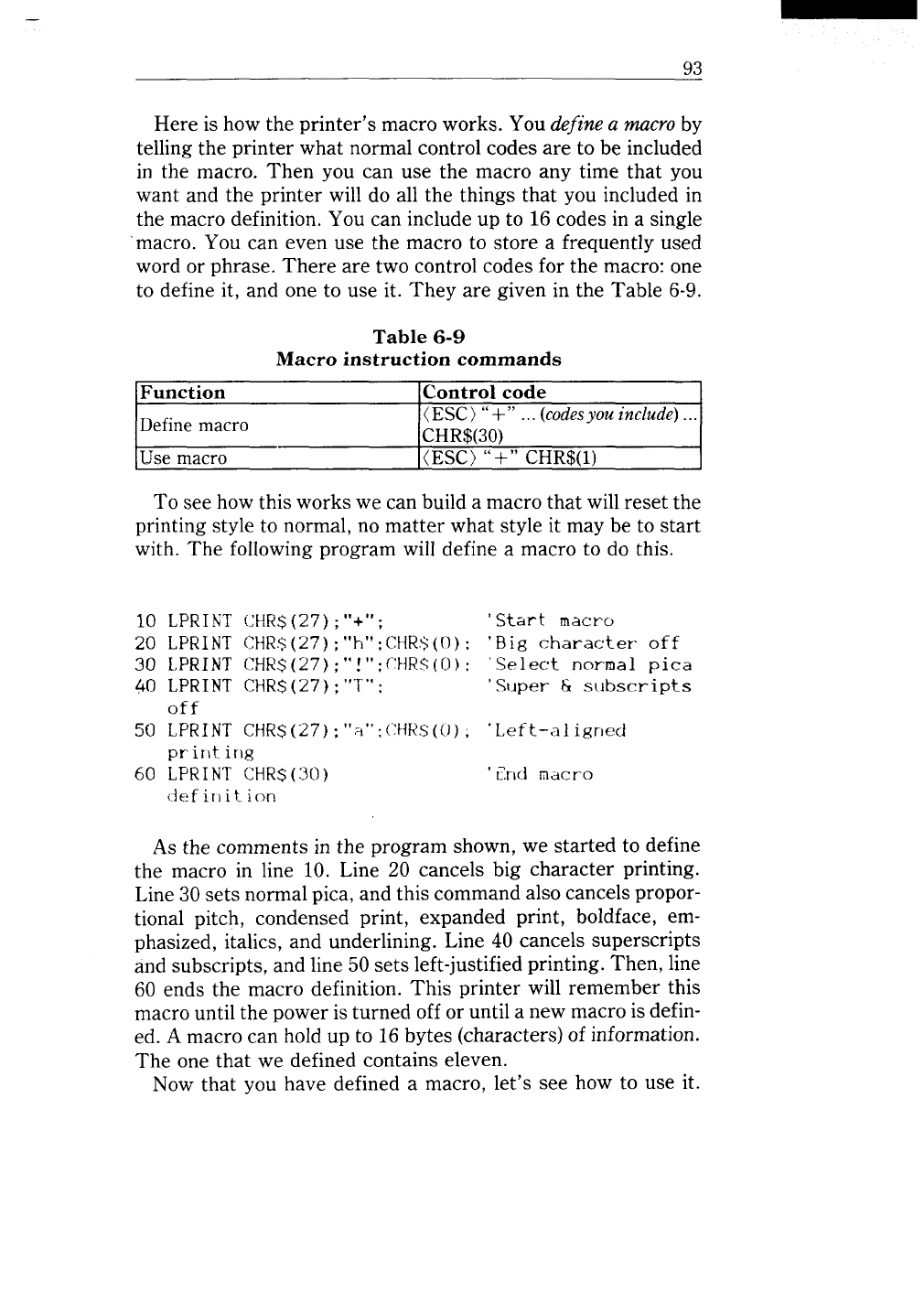
93
Here is how the printer’s macro works. You dejlne a macro by
telling the printer what normal control codes are to be included
in the macro. Then you can use the macro any time that you
want and the printer will do all the things that you included in
the macro definition. You can include up to 16 codes in a single
‘macro. You can even use the macro to store a frequently used
word or phrase. There are two control codes for the macro: one
to define it, and one to use it. They are given in the Table 6-9.
Table 6-9
Macro instruction commands
Function
Control code
Definemacro
(ESC) “+”
...
(codesyouinclude)..
CHR$(30)
I.Jse
macro l(13SC”j““+” CHRM1)
To see how this works we can build a macro that will reset the
printing style to normal, no matter what style it may be to start
with. The following program will define a macro to do this.
10 LPRINT CHR$(27) ; “+”;
1
Start macro
20 LPRINT CHR.$(27) ; “h”; CHR$([”l) : ‘
Big character off
30 LPRINTCHR$(27) ;” !”:
CHRS(O) : Select normal pica
AO LPRINT CHR$(27) ; “T”:
‘
Super & subscripts
off
50 LPRINT CHR$(27) ; “a”; CHRS(0) ; ‘ Left-al i.gnecl
pr irlt i n.g
60 LPRINT CHR$(30) ‘
Znd rirdcro
def
ir~i t-ion
As the comments in the program shown, we started to define
the macro in line 10. Line 20 cancels big character printing.
Line 30 sets normal pica, and this command also cancels propor-
tional pitch, condensed print, expanded print, boldface, em-
phasized, italics, and underlining. Line 40 cancels superscripts
and subscripts, and line 50 sets left-justified printing. Then, line
60 ends the macro definition. This printer will remember this
macro until the power is turned off or until a new macro is defin-
ed. A macro can hold up to 16 bytes (characters) of information.
The one that we defined contains eleven.
Now that you have defined a macro, let’s see how to use it.


















